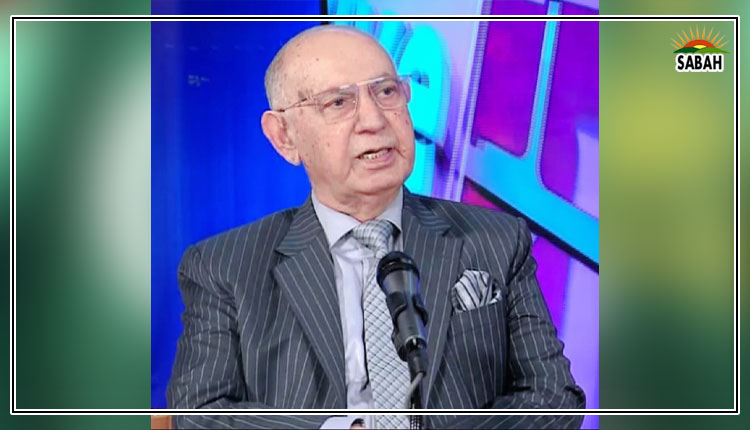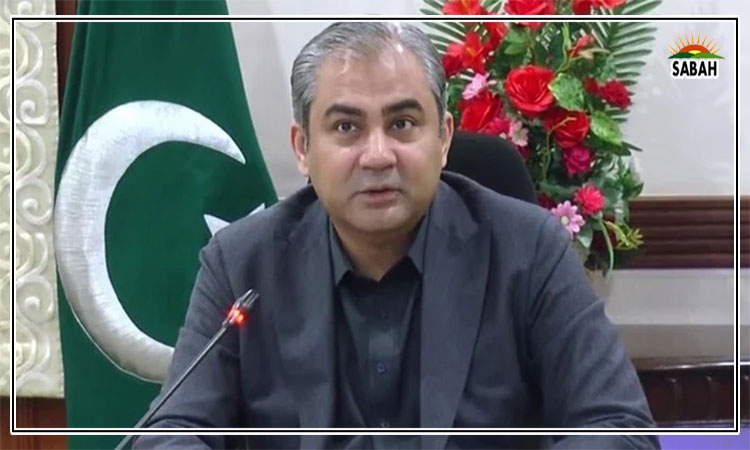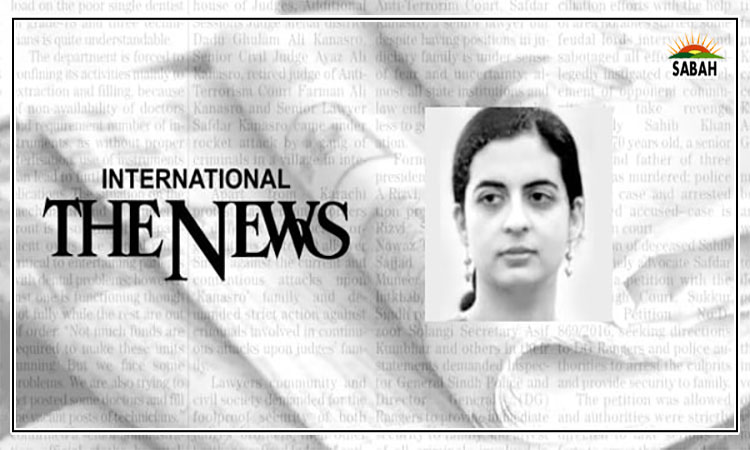The loss of logic ….Kamila Hyat
It is quite obvious that digital media is taking over from more conventional modes of entertainment, including the television screen. According to surveys conducted by organizations such as Gallup, Pakistan has seen a rapidly increasing rate of internet penetration in recent years, with people in more and more households using personal screens, whether on tablets, laptops or smartphones, and social media sites as their primary source of obtaining news.
The emergence of YouTube and other platforms has opened up debate on many issues that have remained shrouded in silence for years and continue to be taboo on television channels. While this rupture in the veil of censorship is a good thing, there are dangers too. The running of YouTube channels has given rise to persons who wish to promote themselves or their ideas without the traditional scrutiny that an organized media newsroom would put their content through.
This happens even today in the age of the dying newspaper and the crumbling TV shows. But YouTube and other popular platforms including Facebook have no such checks. They are free to say what they like, and quite often do so without any check, or use of sources or logic to back the often bizarre theories they put forward on religion, gender or instances of misinformation and fake news.
We have seen more and more such persons attain huge followings through their actions, and in the process accumulate large amounts of dollars. There is no harm in earning off YouTube – but there is harm in putting forward unfounded personal perspectives before people and presenting them as the absolute truth. Some of these figures deliberately espouse controversial views to increase engagement with their content and further their following.
The ideas of vaccines not working, of portals opening up and even political thoughts such as the insistence that democracy is not suitable for our country are dangerous. When they have been challenged by other podcast hosts or content creators, it is these creators who have then often come under attack. In some cases, they have perhaps exhibited their biases too openly, but then on a podcast, it is their right to do so. This after all is not a conventional television interview.
The modus operandi used on both social and mainstream media is much the same. The ‘preachers’ who come forward put down anyone who challenges them, especially women or members of minority groups, or young people with thinking minds, by asserting that they have supremacy and that their ideas are backed by incontrovertible evidence. This evidence is not put forward as should happen each time a theory or a possibly controversial notion is put out before audiences. It is of course impossible to restrict social media, and the attempts to do so by the Pakistan state are not welcome. But we must build within audiences the ability to understand and look analytically at what is put out before them. People who proclaim themselves to be men or women of religion or a particular school of ideological belief should not be blindly believed.
We do have instances in which hosts have tried to expose such persons. One problem is that in a pattern that to some degree mimics the ideas used by the PTI, droves of followers attack these hosts on all forums and insist that they are at fault for being derogatory or failing to acquire proper knowledge of what is put out before them. This may be true in some cases given the lack of boundaries within which digital media works, but it is not true everywhere. In the past, we have seen people make fools of audiences by quoting ideas based on no fact that can be found in a solid source. There is more and more such content taking over social media. The place is tempting for all those who wish to gain personal benefit and perhaps also wealth.
One problem is that we do not teach sufficient critical thinking to our children and young people at any point in their lives. The child who questions is not answered in logical terms. Men like Dr Pervez Hoodbhoy who attempt to prove reality for very young audiences are sometimes taunted. This country has become a dangerous place in which to air views that differ from those of the dominant majority.
People also need to understand that YouTube and other social media forums are not reliable places from where to acquire information or real news. Particularly in the age of artificial intelligence, even those without advanced technological skills can create convincing ‘deepfakes’, or manipulate images or audio to make people appear to say or do things they never did. Social media can then pose significant dangers.
We have seen maverick preachers take full advantage of the lack of knowledge of people in a country where the literacy rate still hovers at 50 per cent or lower. But it is not only the uneducated who are vulnerable. Those who go to schools and colleges are too often equally unable to distinguish fact from fiction in the content put out on social media.
We need to ask what the truth is behind the way people think and what they believe. There are more and more young people who back more open ideas even if it is difficult for them to verbalize in public space the views that they hold. Gradually, step by step, we need to find a way for this to happen. Already, forums are opening up in which people come together to put forward ideas that are not popular in the society we have built.
It is difficult to measure where the lines of division lie. But we do need to focus on educating people about the need to think logically and not simply believe every theory that is put before them. We know that this happens in the West as well, with evangelical preachers coming out with their own visions. However, the fact that at schools and colleges people are encouraged to think for themselves and read widely helps counter this quite considerably.
There are surveys which show that younger people are especially sceptical of views that their parents and grandparents blindly believed in. We must emphasize the importance of independent, critical thought if we are to avoid falling prey to misinformation and harmful ideas and learn to distinguish the logical from the illogical, fallacy from fact.
The writer is a freelance columnist and former newspaper editor. She can be reached at: kamilahyat@hotmail.com












